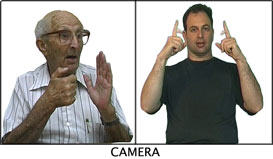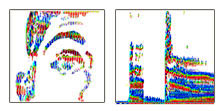Our research projects are described briefly below. For more information and publications on each topic, click READ MORE…
Diachronic development of Israeli Sign Language

The historical development of Israeli Sign Language (ISL), from its earliest days to the present, is the focus of this research project, conducted by Irit Meir. Since ISL is a young language, having come into existence as the local Deaf community coalesced, beginning about 80 years ago, it provides a natural laboratory for investigating the formation of a national sign language language change in a culturally and linguistically diverse community. The project systematically investigates the language of four generations of signers, and the ways in which each contributed to the development of the full contemporary system.
Prosody

The investigation of prosody in Israeli Sign Language demonstrates that sign languages have comparable prosodic systems to those of spoken languages, although the phonetic medium is completely different. The research led by Wendy Sandler has presented evidence for prosodic constituents in ISL and established that facial expression in sign language plays a role similar to that of intonation in spoken language. Similarities as well as interesting formal differences between the intonation of spoken and signed language offer a new perspective on the relation between the phonetic basis of language, its phonological organization, and its communicative content.
Lexicon and Morphology
![]()
Signs in sign languages have internal morphological structure, like words in spoken languages. Yet sign languages favor a specific type of morphology, the simultaneous, non-concatenative type. Verb agreement is an example. By applying a particular componential analysis of verbs in ISL, Irit Meir develops a model which can predict the agreement pattern of each verb in ISL and other sign languages, and, at the same time, can pinpoint the similarities and differences between the spatial predicates of ISL (and sign languages generally) and the auxiliary and verb systems of spoken languages.
By examining both the common non-concatenative type of sign language morphology as well as the rare but attested sequential affixation in these languages, our work identifies properties that make sign language a morphological type.
